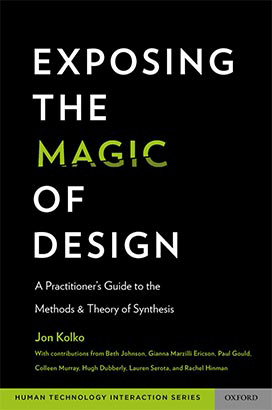
This is from 2011 | 4 minute read
When Trying to Invent, Being Objective Can Cripple Your Process
The Importance of a Point of View
Most professional careers celebrate objectivity. Doctors, engineers, bankers, and anthropologists all describe a need for a clear, sensible, emotionless approach to their work. Data is king in these fields—until hard data is provided, professionals are taught to be skeptical, and to reject unsubstantiated changes. Metrics and empirical tests of efficiency, validity, or productivity are celebrated. Even marketers—whom often produce humorous and emotionally charged artifacts—tend to substantiate their work with rigorous data collection both before and after the production of these artifacts, in an attempt to add some form of rationalization, and to track and analyze their successes. Google Analytics has made the infamous A/B testing ubiquitous in web properties, where a full suite of metrics can be processed and tracked in order to understand the causal relationship between a decision and the behavior of the community of users. This idea of causality is the holy grail of statistics, as it—when combined with appropriate sampling and other qualities of statistical significance—indicates a direct and logical relationship between an action and a response.
Designers, too, have found value in data—we've learned to use it to "speak the language" of other disciplines, who frequently hold some form of decision making power over our ideas. Designers have, with some successes and a great deal of failures, attempted to cost-justify usability with data, rationalize branding and mark-making with questionnaires and surveys, and utilize trends, patterns, and "best practices" to back up our design decisions.
During design synthesis, this is recipe for disaster, and the reason is found—perhaps ironically—in data from cognitive, social and behavioral psychology.
Framing and Sensemaking
To state the obvious, we are all different. We start with various genetic dispositions, and over time, we've experienced different things and been taught different morals and cultural norms. We've had serendipitous moments, we've learned, and grown, and changed. And we approach the world through a lens that is made up of these moments, feelings, and emotions. There's one reality, but lots of ways of viewing it. And this lens directly effects how we act in a given situation. This is a frame—a perspective, one built over time and through our experiences. A frame allows us to understand cultural norms and nuances, and allows us to "instinctively" or "intuitively" react to a situation. We approach every experience from a certain vantage point, and from that unique perspective we judge and interpret and make decisions. Our political views, our prejudices, and even our tastes in music affect the way we approach each new experience, and these new experiences in turn continue to refine our views and tastes.
During synthesis, this frame, and our awareness of it, acts as our most important tool. For as a designer stands in front of a whiteboard in a war-room, surrounded by anecdotes, quotes, pictures, sketches, and working models—and searching for a new, innovative, and persuasive idea—she is relying on her ability to connect something in her own life with something in the data she's gathered. She is purposefully applying a frame of bias to objective, empirical data, in order to produce something new.
This is called sensemaking. According to Karl Weick (known primarily for his work in organizational and behavioral theory), sensemaking is, "importantly, an issue of language, talk, and communication. Situations, organizations, and environments are talked into existence... Sensemaking is about the interplay of action and interpretation rather than the influence of evaluation on choice." Cognitive psychologist Robert Hoffman describes sensemaking as "... something different from creativity, comprehension, curiosity, mental modeling, explanation, or situational awareness... sensemaking is a motivated, continuous effort to understand connections (which can be among people, places, and events) in order to anticipate their trajectories and act effectively."
During design synthesis, we apply our perspective to data, and something new is produced. The more interesting our perspective, the more interesting the end result. Put another way, sensemaking is most likely to lead to something new and exciting when those doing the synthesis have led a life of extreme, interesting, fresh, unique, obscure, and extremely varied experiences.
I find this particularly important, as it arrives at the heart of most organizations—the people they employ. I've discussed methods and techniques for synthesis, and the culture and environment necessary to make meaning of data, but all of this is useless if the people doing the synthesis aren't very interesting. Synthesis requires a team of varied and highly eclectic designers who are empowered to embrace their biased perspectives. Through this bias and judgment comes innovation. Groundbreaking design doesn't come through statistical regression testing, metrics, and causality. It comes from the richness of a biased perspective on the world.
This is part three in a Fast Company series; you may also enjoy reading parts one and two.
Kolko, Jon (2011), "When Trying to Invent, Being Objective Can Cripple Your Process". In Fast Company.
